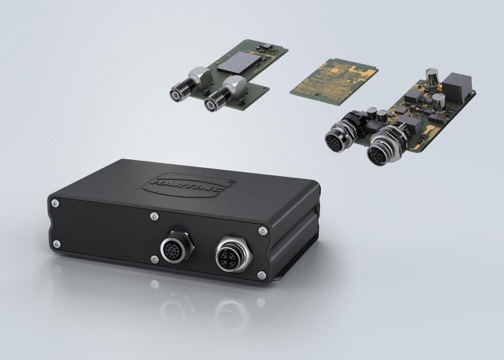
 |
Charlotte Stonestreet
Managing Editor |
Adding intelligence to manufacturing
18 October 2016
At Smart Factory Expo, Harting is demonstrating its range of automation solutions for improving the efficiency of manufacturing logistic processes based on the concepts of Integrated Industry 4.0 and the Internet of Things (IoT).

Harting’s approach to smart manufacturing is based on the addition of intelligence to manufacturing processes with the aim of achieving a high level of connectivity, visibility, awareness, and adaptability at all stages in the supply chain. By enhancing users’ processes with RFID technology, Harting makes it possible to implement solutions that deliver real profitability gains without the need for re-engineering already proven, stable manufacturing processes.
The two key elements are machine-to-machine communications and manufacturing logistics. Machine-to-machine communications is typically concerned with the transmission of information obtained from the monitoring of production equipment to improve diagnostics and to enable effective preventative maintenance.
Manufacturing logistics replaces the existing supply chain management model with the use of intelligent systems to implement functions such as supplying the line with discrete and accurate quantities of materials; ensuring goods flow on a “just in time” schedule, and faithfully tracking assets and inventory in the warehouse and in transit.
Harting’s approach to manufacturing logistics involves the use of RFID sensor networks to collect manufacturing data which is then “operationalised”, allowing, for example, production lines to be adjusted, maintained, or re-tooled, based on live information. The ability to use this manufacturing data rapidly to inform IoT systems can be invaluable to users in creating a competitive advantage in complex markets.
New developments in RFID technology being featured by Harting include the unique Ha-VIS LOCFIELD flexible coaxial travelling waveguide antenna, which can sense multiple transponders via an RF field radially extended over its length of up to 10 metres. It can be applied in limited space applications where normal patch antennas would be difficult to install. Also on show is the compact Ha-VIS RFID RF-R300 reader, whose rugged construction and IP67 degree of protection means that it can be sited in harsh environment conditions, and a comprehensive range of passive transponders that can be applied on all types of materials, in particular metal surfaces.
Harting now allows manufacturers to integrate together the two key manufacturing IoT elements of machine-to-machine communications and manufacturing logistics through its new open-source industrial computing device known as MICA (Modular Industrial Computing Architecture). MICA can save, evaluate and process data from sensors, and can then either act as a stand-alone offline computer that can either make local decisions or operate as a gateway via the internet to allow access to a higher-level IT system. It operates with open architecture software, allowing it to be very easily customised. Software applications run in Linux-based containers which hold all the necessary libraries and drivers. As a result, there should be no concerns over data security when MICA is allowed access to a higher-level production operating network.
- Connections in tight spaces
- More power for system devices
- I4.0 digital control systems collaboration
- Enables workflow optimisation
- Quick assembly in limited space
- Power connection directly onto the PCB
- Rear mounting option for Han metal hoods & housings
- Battling big data bottlenecks
- HARTING presents the ix Industrial®, a miniaturised solution for fast Ethernet delivery
- High resistance & safe handling


















